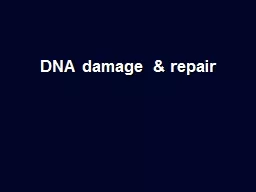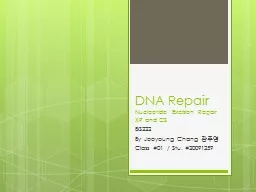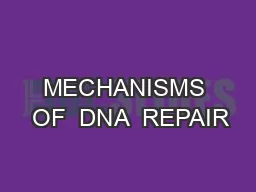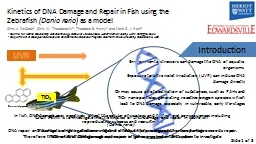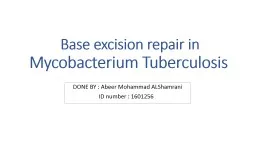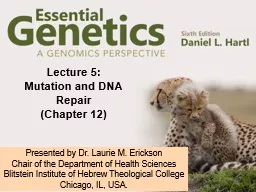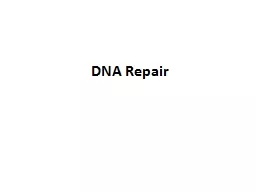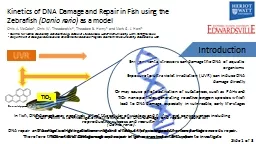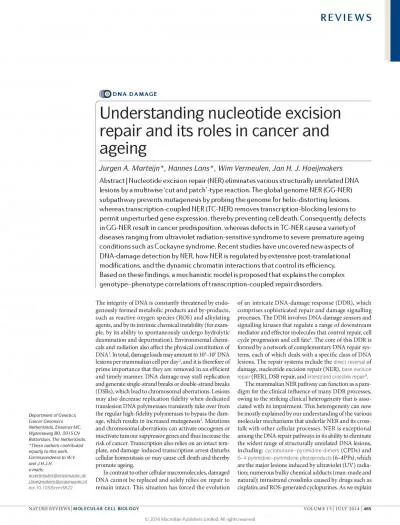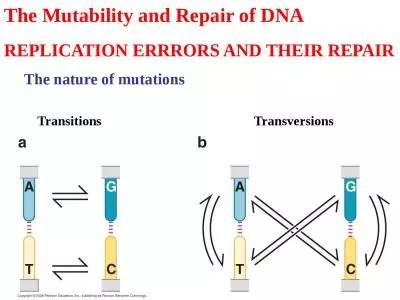PPT-DNA damage & repair
Author : ellena-manuel | Published Date : 2017-04-11
DNA damage and repair and their role in carcinogenesis A DNA sequence can be changed by copying errors introduced by DNA polymerase during replication and by environmental
Presentation Embed Code
Download Presentation
Download Presentation The PPT/PDF document "DNA damage & repair" is the property of its rightful owner. Permission is granted to download and print the materials on this website for personal, non-commercial use only, and to display it on your personal computer provided you do not modify the materials and that you retain all copyright notices contained in the materials. By downloading content from our website, you accept the terms of this agreement.
DNA damage & repair: Transcript
Download Rules Of Document
"DNA damage & repair"The content belongs to its owner. You may download and print it for personal use, without modification, and keep all copyright notices. By downloading, you agree to these terms.
Related Documents

